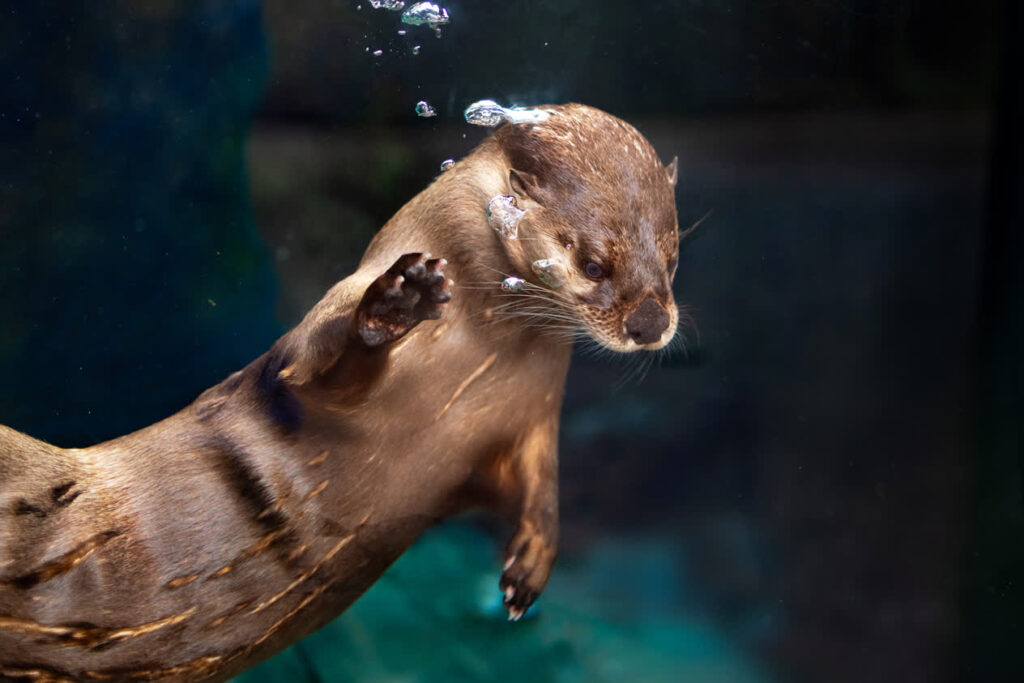Species Type:
Freshwater Mammals
Common Name(s):
North American river otter
Size:
On average, river otters grow to be three to four feet (0.9-1.2 meters) and can weigh anywhere from 11-30 pounds (5- 14 kilograms)! Male river otters are typically larger than their female counterparts.
Diet:
North American river otters aren't picky eaters, they eat a wide range of foods available to them in their aquatic environments. This includes: fish, crustaceans, frogs, birds, eggs, turtles, muskrats, rabbits and occasionally aquatic plants, like seagrass.
Range & Habitat:
North American river otters have been spotted in Canada, the United States (excluding southwest regions), and Mexico in delta areas. Otters will create their dens along ponds, marshes, lakes, rivers, estuaries and most other aquatic areas.
Details:
The short statured North American river otter has highly adapted physical features that equips them for both aquatic and terrestrial environments. Short legs, webbed toes and a strong flattened tail allow them to propel them through the water. Other physical adaptions include: long whiskers that help them detect prey when water visibility is low, a thick and protective coating of fur that provides them warmth while swimming in cold waters and clawed feet to catch slippery prey. River otters like to make their dens along water ways so they can enter from underwater and remain relatively close to their food source. They’re very social animals and build bonds by tail chasing, playing in the water, or even aiding less experienced otters with hunting tips. I guess you could say they have each otter’s back!


